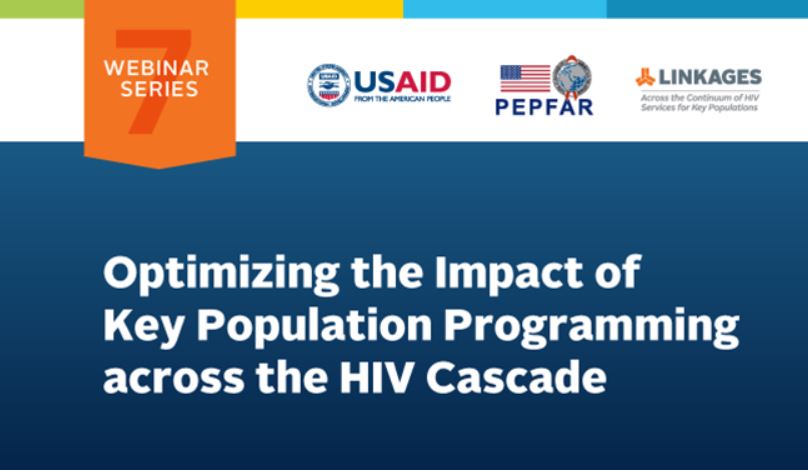Event Date
Webinar hosted by the LINKAGES project as part of the Key Populations: Evidence in action series.
To access the papers from the Journal of the International AIDS Society supplement, “Optimizing the Impact of Key Population Programming across the HIV Cascade,” please click here.

On October 4th, the USAID– and PEPFAR-supported LINKAGES project hosted the seventh webinar in a webinar series entitled Key Populations: Evidence in Action. This webinar presented highlights from the new Journal of the International AIDS Society (JIAS) supplement focused on key populations. Panelists shared new data published in the supplement on what works to reach key populations and link them to the HIV prevention, treatment, and retention support they need. The session provided an opportunity to learn about and discuss the latest innovations, outreach strategies, and delivery modalities for overcoming structural obstacles and improving service uptake for different key population groups across different geographies.
Cameron Wolf, USAID
Opening Remarks
Glenn-Milo Santos, University of California, San Francisco
Blue-Ribbon Boys: Factors associated with PrEP use, ART use, and undetectable viral load among gay app users across six regions of the world
Kristen M. Little, Population Services International
Social network methods for HIV case-finding among people who inject drugs in Tajikistan
Tendayi Ndori-Mharadze, Centre for Sexual Health and HIV/AIDS Research, Zimbabwe
Changes in engagement in HIV prevention and care services among female sex workers in Zimbabwe following intensified community mobilization
Kimberly Green, PATH, Vietnam
From conventional to disruptive: Upturning the HIV testing status quo among MSM in Vietnam
Raquel de Boni, Oswald Cruz Foundation (Fiocruz), Brazil
Self-testing, communication, and information technology to promote HIV diagnosis among young gay men and other MSM in Brazil
Waimar Tun, Population Council
Uptake of HIV self-testing and linkage to treatment among MSM in Nigeria: A pilot distribution program through key opinion leaders
Parinita Bhattacharjee, University of Manitoba, Kenya
Implementing a violence prevention and response strategy for key populations in Kenya
Trista Bingham, Centers for Disease Control and Prevention (CDC)
Closing Remarks
This webinar series is intended to be a platform for (1) sharing state-of-the-art knowledge, emerging evidence, and promising practices for achieving greater impact on the HIV epidemic through programs for key populations; (2) addressing pressing questions and controversial issues from the perspective of key population experts and community members; and (3) fostering dialogue among a broad set of partners working in key-population-focused research, programming, and advocacy.
The webinars will cover a range of topics, including introduction and scale-up of HIV self-testing and pre-exposure prophylaxis for key populations; cascade monitoring and data use; information and communication technology-based interventions; effective strategies for addressing violence, stigma, and discrimination; differentiated models for delivering antiretroviral therapy; and community empowerment.
This webinar series is open to anyone interested in key populations, including program implementers, researchers, policy-makers, advocates, funders, and community members.
